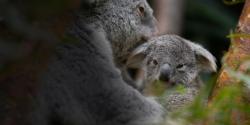The Mexican wolf is the smallest, southernmost, rarest, and most genetically distinct subspecies of gray wolf in North America (Canis lupus).
With human settlement intensifying in the West during the early 1900s, large cattle operations and declining native prey populations such as deer and elk caused many wolves to start preying on livestock. This led to focused efforts to eradicate the Mexican wolf from the southwestern United States. By the mid-1900s, Mexican wolves had been effectively eliminated from the United States, and their numbers in Mexico were dwindling.
In 1973, when the Endangered Species Act was enacted, wolves were among the first species to be put on the list. This allowed Mexican wolves to be listed as an endangered species by the U.S. Fish and Wildlife Service in 1976, which prompted recovery efforts to save the species from extinction. The last seven surviving wolves were captured and bred in human care, and their offspring were reintroduced in 1998. Since then, there have been many strategies and partnerships involved in the long and arduous conservation journey. As of the end of 2022, experts have announced that a minimum of 242 Mexican wolves have been counted in the wild. Although the future of Mexican wolves in their native range is still uncertain, recovery for the species may be on the horizon.
Scientific Name: Canis lupus baileyi
Conservation Status: Endangered
Size: A typical length from snout to tail tip is a little over five feet. They can measure between 28 and 32 inches at the shoulder when on all fours.
Weight: Mexican wolves typically weigh between 50 and 80 pounds.












